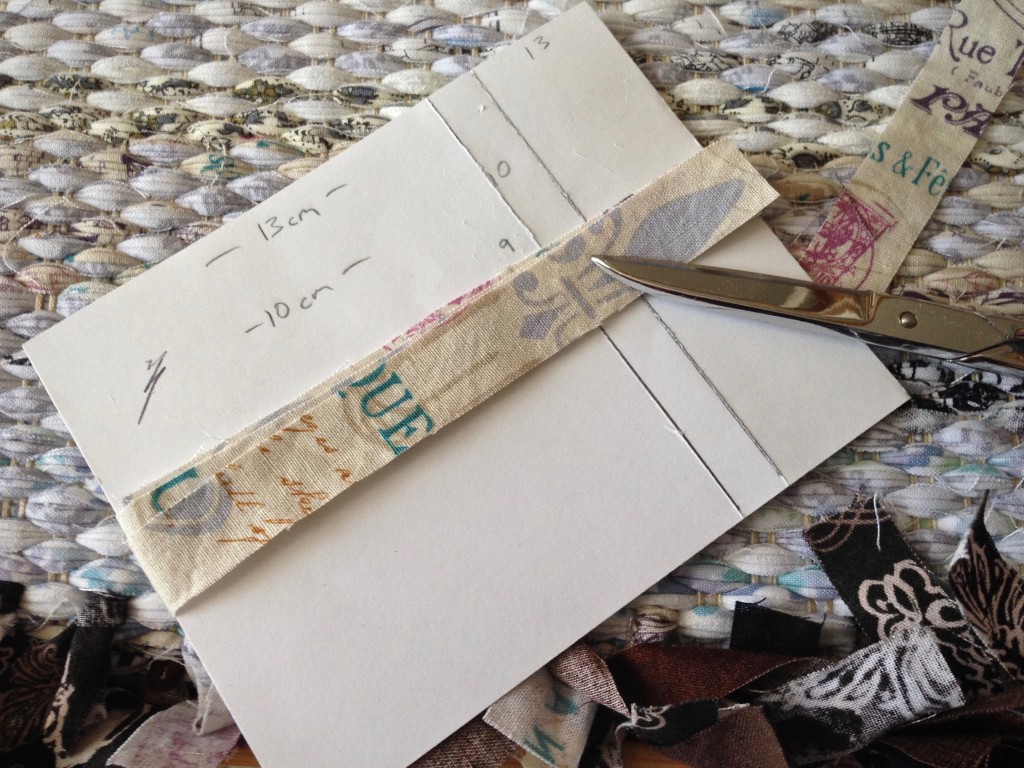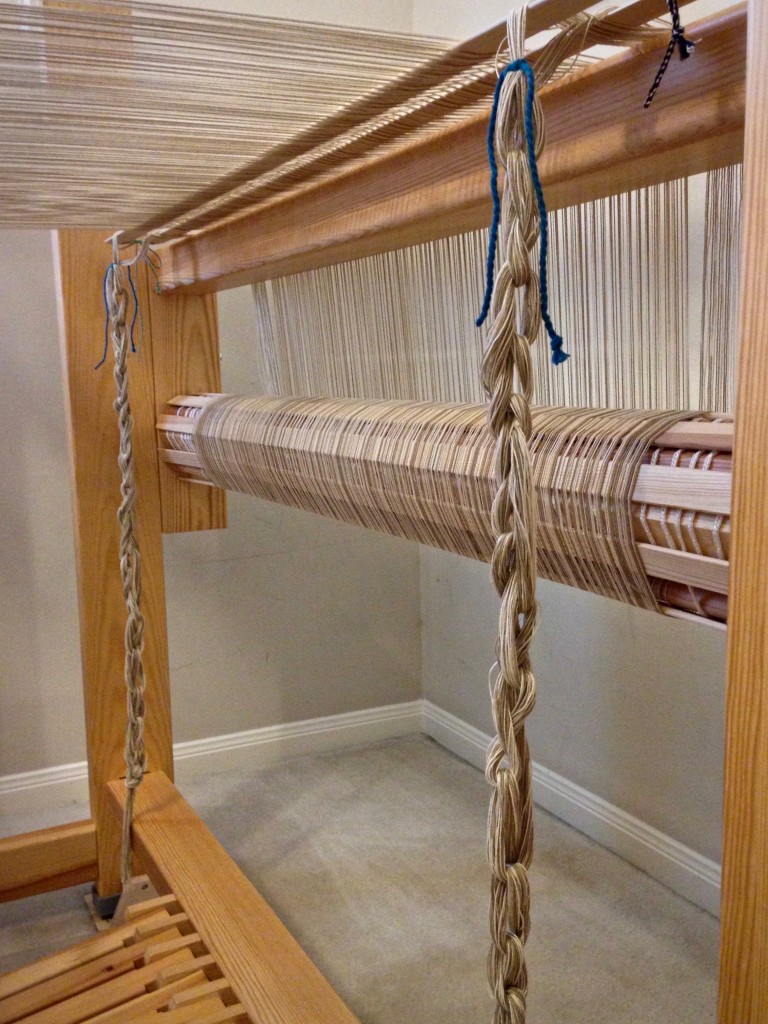No fancy stuff for this rug, like rya or loops. The main thing is to finish off this warp. I am eager to get on to the next project–monksbelt (munkabalte)! Even so, it is good to enjoy what you are doing, to be happy and content with what you have and where you are. There is no use complaining about having to finish this. …even though something else seems more exciting.

A grumbling attitude can strip all the joy from the current process. Grumbling poisons your thinking. It starts as a small complaint, but is never content to stay small. In fact, grumbling spreads to other people and corrupts their desires, too. Better to refuse it before it has a chance to begin. Notice and enjoy the blessing of the moment you are in. And so far, I haven’t found a rag rug I didn’t enjoy weaving. Now that’s a blessing!
May your attitude be worthy of imitation.
With contentment,
Karen



















